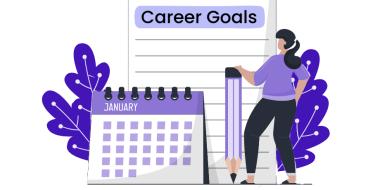How to write a resume in Spanish
According to Forbes, 90% of employers rely on workers who speak a language other than English, especially when expanding into new markets or exploring business development opportunities (1).

Being fluent in Spanish can help you capitalize on this trend. If you are applying for a job in a Spanish-speaking country or for a role that lists Spanish as the primary language, you will likely need to submit a resume in Spanish.
However, you can’t simply translate your existing resume from English to Spanish. Instead, you must craft an engaging Spanish resume that respects the professional norms of Hispanic or Latino culture while simultaneously demonstrating that you’re a great fit for the position.
When to use a Spanish resume
You will likely want to submit your resume in Spanish if you are applying for any position in a Spanish-speaking country or at a Spanish-speaking company anywhere in the world unless speaking Spanish is not a requirement for the job. Consider which language the job posting is written in when deciding whether you should write in Spanish or English, as well as which language you would prefer to conduct a potential interview in. If you write your resume in Spanish, the employer will likely expect to interview you in Spanish, as well, and vice versa.
In most Spanish-speaking countries, resumes are generally called CVs. In Spain, they may be referred to as “curriculums,” while in some parts of Latin America, they may be called “hojas de vida.”
Formatting and structure basics
While there are numerous differences between a resume in Spanish and one in English, many of the basic formatting rules still apply. Here’s what you need to know:
Resume length
In most places, the standard resume length is one to two pages.
Don’t feel like you have to “fluff up” your resume. If you have a limited work history or are a recent graduate, keep your resume to one page and focus on providing useful insights about yourself. If you have lots of experience, a two-page resume is acceptable, but only if you use the extra room to deliver real value.
Use a mix of paragraph-style summaries and bullet points. Your paragraphs should be focused and short; avoid run-on sentences or rambling. You should also research professional norms in the nation in which you want to work. Some countries may place more emphasis on skills, whereas others may prioritize education.
Font and layout
Standard American font and layout rules also apply to Spanish resumes. Choose a font that’s clean and easy to read, such as Calibri or Arial. Your text should be in 10–12-point font size. These fonts are easy on the eyes and will give your resume a clean, orderly appearance.
Use bold headings to clearly label important sections. However, avoid decorative or cursive fonts, which can be difficult to read. Remember, empty space isn’t a bad thing. Let your document breathe by setting clear margins and section breaks. A well-formatted resume will showcase your professionalism and attention to detail.
Key parts of a work resume in Spanish
Before you start writing your Spanish resume and cover letter, it’s important to plan out the structure. A standout resume in Spanish should include the following components:
Professional profile (perfil profesional)
Start with the basics, such as:
- Your full name
- Your contact details
- Your nationality
- A professional photograph
Including a photo is common practice in many Spanish-speaking countries. Just make sure your photo is high-quality.
Next, transition into your professional profile, which is a concise summary of what you bring to the table. Discuss your skills, experience, and career goals. Your profile should only be a few sentences.
Think of your professional profile as the hook to a great book. It should capture the reader’s attention right away and make them eager to learn more about you and your skill set. Don’t embellish, but don’t be shy about discussing the unique value you provide.
Skills (habilidades)
The “Skills” section of your resume is one of the most important. It should break down the technical and soft skills you possess that are relevant to the position you’re applying for. Make sure to create a work experience section as well. Whenever possible, quantify your statements with hard data.
Showing a potential employer what you’ve achieved is much more impactful than rattling off a list of skills. Anyone can claim to possess a talent. The best job applicants have real numbers to back up their claims.
Languages (idiomas)
Clearly specify what languages you speak and your level of proficiency with each. Don’t embellish any parts of your resume, especially this section. The true depth of your language skills will always come to light, so be transparent.
Additional information (información adicional)
Use this section to outline certifications, volunteer experience, or relevant hobbies. The “Additional Information” section of your resume should be brief. While this section is optional, it’s a good idea to include it to demonstrate that you’re a well-rounded candidate.
Differences from North American English resumes
Obviously, there are many different Spanish-speaking countries around the world and each one has its own resume customs, so it’s important to research the specific country that you plan to work in. However, here are some general differences from North American English resumes that you will likely find:
Include a photo
In most cases, it’s verboten to include a photo of yourself on a North American English resume due to concerns about discrimination. But, in many Spanish-speaking countries, it is normal and even expected to include a headshot on your resume. It generally isn’t mandatory unless the employer specifically mentions to include a photo with your resume, but many employers are accustomed to this practice.
If you decide to include a photo with your resume, avoid using a selfie or cropping an existing image. This should be a professional headshot (showing only your head and shoulders) in which you are dressed appropriately and smiling into the camera. When adding it to your resume, adjust the headshot to about the same size as your passport photo.
Include your personal information
Again, personal information should generally be left off American, Canadian, or Australian English resumes, but it’s expected on most Spanish resumes. This information should include your full name, your age or date of birth, your address or the region you live in, your email address, your phone number (with a country code), your nationality, and your identification number that allows you to work in the country (if you have one).
In this section, you might also include information about your availability schedule, whether you have a driving license for the country, or any other certifications that are relevant to the job that you are applying for.
Place education details before work experience
In some Spanish-speaking countries, more importance is placed on your education than your work experience, so it’s often customary to place your education section immediately after your personal information.
In this section, include the name and location of the school or university, the dates that you attended, and the degree or certificate that you earned (including the Spanish equivalent if possible). You might also include the local equivalent of your GPA or other academic accomplishments to provide context for a potential employer.
Additionally, your education section can include professional courses or industry training programs - it’s not limited to academic degrees like English resumes.
Include work experience, internships, and volunteer work in one section
It’s common to list internships, volunteer work, and professional positions in your work experience section, whereas English resumes typically have separate sections for all three. For each entry, include your job title, the name of the company (including a brief description of the industry if it’s not apparent), the location, your dates of employment, and a description of your job responsibilities and duties. It is less common to include a bulleted list of achievements for each role on a Spanish resume, although it is becoming more popular.
Expert Tip
Adding a skills section is optional
A skills section isn’t compulsory on a Spanish resume, but it has become more common in recent years. So, you can add a skills section if you wish and if you feel it’s appropriate for the company and role that you are applying for.
Spanish resumes typically include less detail
Since Spanish resumes historically don’t include skills sections or a bulleted list of accomplishments, it can be said that they are generally less detailed than North American English resumes. This may be more applicable to the older generations, as many younger Spanish-speaking workers are starting to include a higher level of detail.
However, it’s important to take into account local customs. An American-style resume that is simply translated into Spanish may come off as boastful or aggressive in some Spanish-speaking areas.
Use formal language in your resume and cover letter
In English, of course, there is only one word for “you,” but remember that in Spanish “tu” is used casually among friends and peers while ‘usted’ is used in formal situations or while talking to your superiors. Make sure to use the formal version in your resume and cover letter and when interacting with your potential employer as a sign of respect.
Terminology variations
The term “resume” varies across Spanish-speaking countries. In Spain, it’s commonly referred to as “curriculum,” while in many Latin American nations, “hoja de vida” is prevalent. Familiarizing yourself with these terms will exhibit your cultural awareness and attention to detail.
For instance, let’s say you’re applying for a job in Spain and are required to submit your resume via email. Including the phrase “Curriculum” in the subject line and body of your email will let the employer know you’ve done your homework.
Date and number formatting nuances
Hiring teams are very detail-oriented and are known for picking up on small nuances, especially when reviewing Spanish resumes from non-native applicants.
With that in mind, you’ve got to get the little things right, including using the proper number formatting. For example, dates are typically formatted as DD/MM/YYYY in Spain and Latin American countries, and decimal points may be used instead of commas in numerical values.
Helpful Spanish resume terms
Here are a few Spanish terms that can come in handy while creating your Spanish resume:
- Nombre: Name
- Datos Personales: Personal information
- Formación Académica: Education
- Experiencia Profesional: Work experience
- Competencias: Skills
- Idiomas: Languages
- Aficiones: Hobbies/interests
- Permiso de Conducir: Driving license
Explore our curated Spanish examples below to see these terms in action:
Tips for writing a Spanish resume
Finally, here are some tips to help you get started with your Spanish resume:
Include language abilities
Depending on the situation, you may want to include languages that you speak, including English and (hopefully) Spanish, as well as any other languages. Include your competency level using the scale that is most commonly used in the country where you are hoping to work. You might also include any formal language tests you’ve taken or certifications that you have earned in this section.
Don’t exaggerate your Spanish language abilities
Keep your resume language simple and don’t indicate that you are fluent in Spanish unless you truly are. If you are invited for an interview, the employer will be able to tell almost immediately whether you are truly fluent and comfortable with the language. It’s not worth exaggerating your skills to win an interview only to be immediately caught out, so be honest about your Spanish abilities.
Have a fluent Spanish speaker proofread your resume
However, even if your Spanish language skills are only conversational, that’s no excuse to submit your Spanish resume with errors on it. As such, you will likely want to ask or hire a fluent Spanish speaker to read through your resume and help you correct any mistakes.
Use reverse chronological order
Just like for English resumes, reverse chronological format is the most common. So, list your current or most recent details first and work back in time from there.
Account for regional differences
Finally, remember that there are many different Spanish-speaking countries, and, as mentioned earlier, each one will have its own customs and expectations when it comes to writing a resume. Research the specifics for the country that you intend to work in, and avoid simply translating your English resume into Spanish.
Your Spanish resume checklist
The following checklist will help you ensure that your resume in Spanish is polished and focused:
- Use the correct term based on the region
- Include key sections like “Profile,” “Education,” “Skills,” “Work Experience,” and “Personal Information”
- Keep your resume to one or two pages
- Use a professional font
- Maintain consistent spacing and margins throughout
- Save your resume in PDF format for easy sharing
- Use formal Spanish throughout
- Avoid direct translations from English to Spanish
- Make sure your photo looks professional
- Remove any unnecessary English expressions
- Double-check the formatting of all dates
- Verify that your resume is tailored to the job
Remember, generic resumes don’t cut it in competitive hiring processes. You need a polished document that was created specifically for the role you’re applying for. Otherwise, you risk getting lost in a shuffle of applicants and may miss out on your dream job.
Key takeaways
Writing a resume in Spanish may be necessary if you are applying to a position in a Spanish-speaking country or at a Spanish-speaking company, and the expectations will be different from a North American English resume. You will likely need to include a photo and personal details, but overall a Spanish resume will be less detailed when it comes to work history, skills, and so forth. Be sure to check the resume expectations for the exact country and region that you will be working in.
Need help creating your Spanish resume? Consider using Jobseeker’s professional resume creation tool, which allows you to switch all of your resume section headings to Spanish with the click of a button. Jobseeker also offers an extensive library of resume and cover letter templates designed to help you create stronger, more engaging documents. Explore our resources today.
Sources:
(1) Forbes Article: Multilingual Speakers Wanted: Job Demand Surges For the Next 5 Years
Impress potential employers with your resume
Follow step-by-step professional guidance to create a polished resume in minutes.





